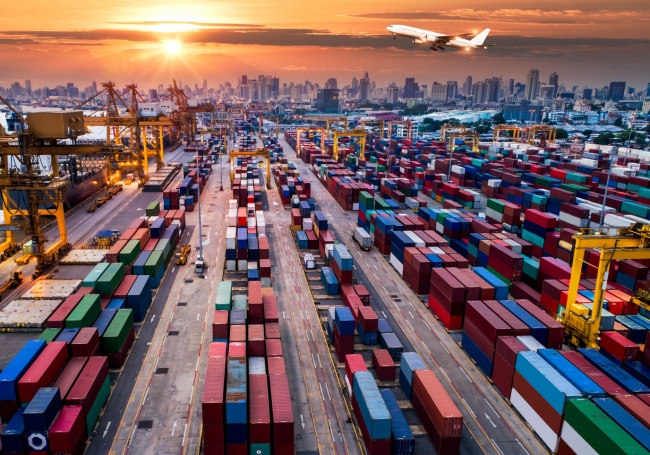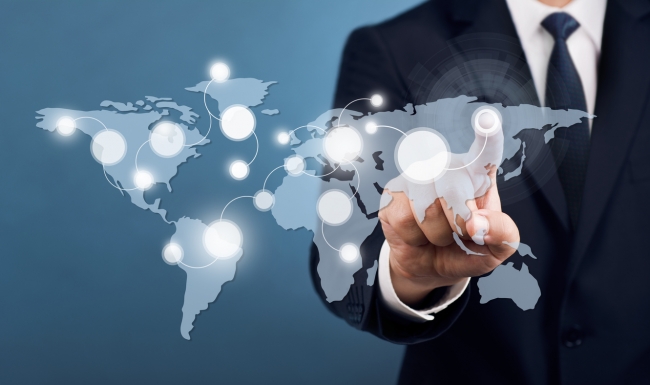3 minute read
Export Growth: A manufacturers guide to localisation & translation
The languages industry is a £36 billion valued-sector but there’s still a distinct knowledge gap about the role it fulfils and how it can help globalise your business. Effective localisation can also avoid some of the hurdles multinationals have tripped over in the past. Ben Whittacker-Cook from Straker Translations explains more.
There’s a clear difference between translation and localisation, which customers who are new to translations aren’t always aware of.
Translation is a straight ‘switch’ from one language to another and is undertaken by either a machine or a human translator. While at its simplest level, localisation involves professional human translators translating content, and then using their local language expertise and domain experience to add cultural nuance, correct grammar conventions, context and sector-specific terminologies. The aim is to make it seem as if the content has been created especially for the market into which you’re exporting.
Translation
Translation is most definitely a science. Words alter their meaning and develop multiple definitions that get twisted over time. So, even though the Spanish spoken in Spain varies greatly to the Spanish spoken in Latin America and the two can communicate with each other quite happily; regional variations, colloquialisms and cultural influences take hold.
‘Guagua’ means baby in standard Spanish, but ‘bus’ in Latin American Spanish. And there are hundreds of tripwires like this which can embarrass everything from your technical documentation to your global marketing efforts.

Localisation takes a step beyond translation and focuses on making the content you produce, seem that is has been produced especially for the market into which you’re exporting / Picture: Getty/iStock
So, if language is a science, localisation may be considered an art form, because localisation in business has to overcome all these language differentials and local customs.
In our online world, consumers have very different browsing and purchasing habits from country to country. Evidence suggests that people buy more products and services from a properly localised site. 75% of customers prefer to buy from companies with information translated into their local language, and 55% of customers prefer to only buy from websites with information in their first language. (The Common Sense Advisory)
When UK online consumers are asked for their ‘zip code’ or ‘region’, something triggers a negative reaction in our minds. This website has not been localised properly for the UK market and we abandon that site before ordering.
Localisation
Localisation involves translating content, but also using human translator knowledge to make sure a brand’s logos, colours, straplines, SEO and even images paint the best possible picture in new export markets.
It’s a philosophy that works across all sectors, including the manufacturing sector but does any of this really matter? HSBC Bank was forced to rebrand its entire global private banking operation after taking a US campaign overseas. The tagline ‘Assume Nothing’ was incorrectly translated as ‘Do Nothing’, in 2009. Rebrand costs totalled US$10 million.
Ford hit a problem when a campaign running in Belgium mistranslated ‘Every car has a high-quality body’ to ‘Every car has a high-quality corpse’. Electrolux’s tongue-in-cheek ‘Nothing sucks like an Electrolux’ tagline was clever enough, but it bombed in the US because local audience’s took it at face value.
Orange symbolises happiness, health and prosperity in Europe, but in parts of the Middle East and Egypt, orange represents loss and mourning. Blue is universally recognised across countries as being safe, transparent and dependable, which is why financial institutions and car manufacturers including Barclays, PayPal, Unilever and General Motors lean heavily towards predominantly blue logos.

Manufacturers that are focused on growing their export markets should consider the benefits of localisation / Picture: Getty/iStock
Pure machine translations and free translation tools have been getting a lot of attention recently, and the general feeling seems to be that these tools are ideal if you want to know how to order a beer in Munich or find the Brussels-Midi/Zui Eurostar terminal.
Machines use algorithms to calculate probability to assess what word could be next. However, machine translation cannot cope with gender-neutral languages such as Turkish and Finnish. Translate ‘she’s an engineer’ from Finnish into English in Google Translate and you’re presented with ‘Hän on insinööri’. Translate this back again into English and out comes ‘he’s an engineer’.
Professional localisation is a safeguard against potential brand damage from mistranslations. In such a competitive sector as manufacturing, it pays to get noticed. Search engines crawl and index translated sites for SEO purposes. However, if you’ve used a free translation tool, Google will flag your content as auto-generated and penalise your page, setting back your ranking.
This is why more organisations are outsourcing their content to professional language agencies. Or you can be incredibly brave, not localise at all, and use a different language across your business. It can work well… Audi’s Vorsprung durch Technik still resonates with UK audiences 35 years after its arrival. But for every Vorsprung durch Technik there are hundreds of campaigns that go ‘kaput’ – just ask HSBC.
